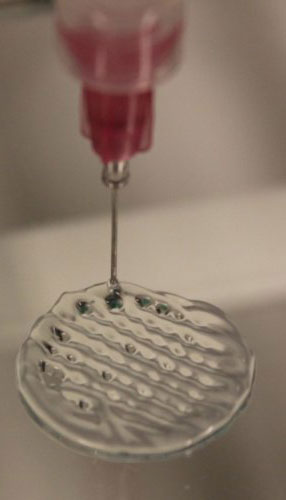Contact: Gary Chinga Carrasco
New opportunities for biobased materials with 3D Printing
Additive manufacturing has emerged as a new technology to manufacture tailored, advanced and complex structures.
We have been experiencing more and more specific cases of research and development, spanning from e.g. 3D printing of massive constructions to incredible 3D bioprinting of human organs. The list of applications is extensive, and a simple google search on “3D printing” delivers more than 31 million articles!
RISE PFI has identified additive manufacturing as a strategic area where biobased materials can play a significant role, both in the form of bioplastics and nanofibers from biomass resources. This is clearly exemplified in the first peer-reviewed publication reporting the use of nanocellulose for 3D printing porous structures for wound healing, which was coordinated by PFI and part of the NanoHeal project.
Additionally, we have been active in exploring the use of PLA and other thermoplastics for fused deposition modelling, also in combination with cellulose fibres and nanocellulose. Such initiatives have motivated the establishment of new networks of cooperation, both at a national and international level, and also resulting in new promising projects about 3D printing (3 DPrinting, ValBio-3D, MedIn, SPAREC).
As part of this strategy, we have established the RISE PFI 3D Printing lab, where we have:
- Extruders for compounding and filament manufacturing for 3D printing
- Various fused deposition modelling (FDM) printing units
- Photopolymerization
- Micro-extrusion for 3D printing of hydrogels.
The printing unit for printing hydrogels is versatile and counts with three printing heads, where one is for simultaneous 3D printing of bicomponents. This opens for new opportunities to explore the cross-linking of structures as the 3D object is being printed.
We look forward to exploring these opportunities with R&D groups and industry, in present and future exciting projects.

R&D partners:
